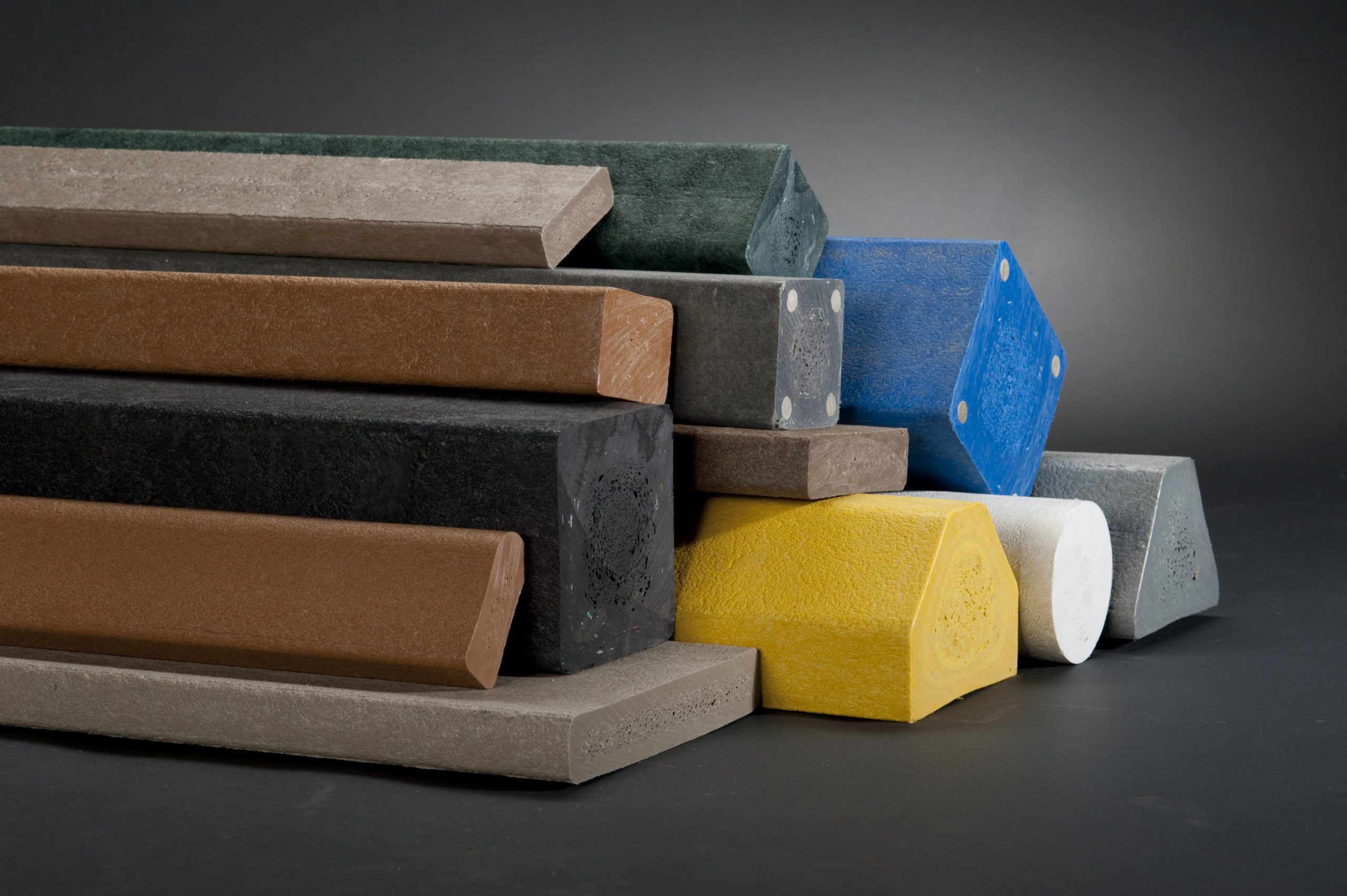Unlocking the Environmental Advantages of Recycled Composites in Construction and Design
In the world of building and layout, the usage of recycled compounds holds significant assurance for enhancing sustainability practices and minimizing ecological effect. The shift in the direction of an extra sustainable future in these markets pivots on opening the complete capacity of recycled compounds.

Environmental Effect Decrease
The decrease of ecological influence through making use of recycled compounds in construction and layout plays an essential role in lasting methods. By integrating recycled composites into structure products, the construction industry can significantly lower its carbon impact and add to an extra green future. These lasting materials, made from repurposed plastics, timber fibers, or various other recycled elements, offer a sensible option to conventional construction products without compromising on quality or longevity.
Recycled compounds help draw away waste from landfills and minimize the need for removing resources, thus saving natural sources. Additionally, the production procedure of these composites usually takes in much less energy and emits less greenhouse gases compared to creating virgin materials (composites). This change towards making use of recycled composites not just minimizes ecological injury however likewise promotes a circular economic situation by motivating the reuse of products that would otherwise be thrown out
Waste Minimization
With a focus on decreasing waste in construction and style, the assimilation of recycled composites uses a lasting service to lower environmental effect. Waste reduction is a crucial facet of lasting methods, and using recycled compounds provides a chance to attain this objective successfully. By using products that have actually already served their preliminary objective, such as recycled plastics or reclaimed wood fibers, the building and style sectors can considerably lower the amount of waste generated and sent to landfills.
Recycled composites have the prospective to divert considerable amounts of waste from typical disposal methods, adding to a much more circular economic climate where resources are used effectively. In addition, the production procedure of recycled compounds often consumes less power and generates less exhausts contrasted to virgin products, further decreasing the environmental footprint of construction and design tasks.
Applying waste reduction approaches via the incorporation of recycled compounds not just assists in conserving natural deposits yet additionally advertises a much more sustainable approach to building and making for a greener future.
Power Conservation
Integrating recycled composites not just decreases waste in building and construction and style however also plays an essential role in boosting energy preservation practices within the sector. Using recycled composites in construction can significantly add to power conservation via different ways. Firstly, the manufacturing of virgin materials typically calls for considerable power inputs, whereas making use of recycled composites consumes much less energy, therefore minimizing overall power usage. In addition, incorporating recycled compounds can contribute to much better insulation properties in structures, lowering the requirement for too much heating or cooling, and subsequently lowering energy use for climate control. In addition, the lightweight nature of numerous recycled compounds can lead to lighter structures, needing much less energy for transportation and installation. By promoting making use of recycled compounds in construction and style, the sector can make substantial strides towards achieving energy effectiveness and lowering its carbon footprint, ultimately contributing to a much more lasting constructed environment.
Carbon Footprint Decrease
Enhancing my response sustainability techniques with the use of recycled composites in construction and design significantly reduces the carbon impact of the market. By integrating recycled materials into More about the author the production of composites, the demand for virgin sources decreases, leading to lower energy usage and greenhouse gas discharges associated with traditional production processes. This reduction in carbon impact is important in combating climate change and advertising a much more environmentally pleasant method to building and construction and style.
Additionally, using recycled compounds also helps in drawing away waste from landfills, therefore alleviating the environmental influence of disposal and promoting a round economic climate. The carbon impact reduction attained with the fostering of recycled composites lines up with the international push in the direction of sustainable techniques and the reduction of commercial discharges. It showcases a dedication to accountable resource administration and a shift in the direction of greener alternatives in the building and layout markets. Inevitably, by prioritizing the combination of recycled compounds, the industry can make considerable strides in lowering its carbon footprint and adding to a more lasting future.
Sustainable Future
The combination of recycled composites in building and construction and style not only addresses prompt environmental problems however also lays a strong foundation for a lasting future in the industry. By integrating recycled composites right into structure materials and items, the building and layout industries can significantly minimize their browse around this site reliance on virgin sources, resulting in a much more circular economic climate. This change towards sustainability is critical for alleviating the environmental effect of typical building techniques, which frequently lead to high degrees of waste generation and resource deficiency.

Verdict
In verdict, recycled compounds supply substantial ecological advantages in building and construction and layout by lowering environmental effect, decreasing waste, preserving power, reducing carbon footprint, and promoting a sustainable future. Welcoming the usage of recycled composites can add to a more environmentally-friendly approach to structure and layout, inevitably leading to an extra lasting and greener future for all.
The decrease of environmental impact through the usage of recycled compounds in building and style plays a critical duty in lasting methods.With a focus on decreasing waste in building and construction and layout, the combination of recycled composites supplies a lasting service to reduce ecological effect. By promoting the use of recycled composites in construction and style, the industry can make substantial strides in the direction of achieving power effectiveness and reducing its carbon impact, inevitably contributing to a much more sustainable built atmosphere.

Comments on “Exactly How Composites are Changing the Landscape of Building Materials”